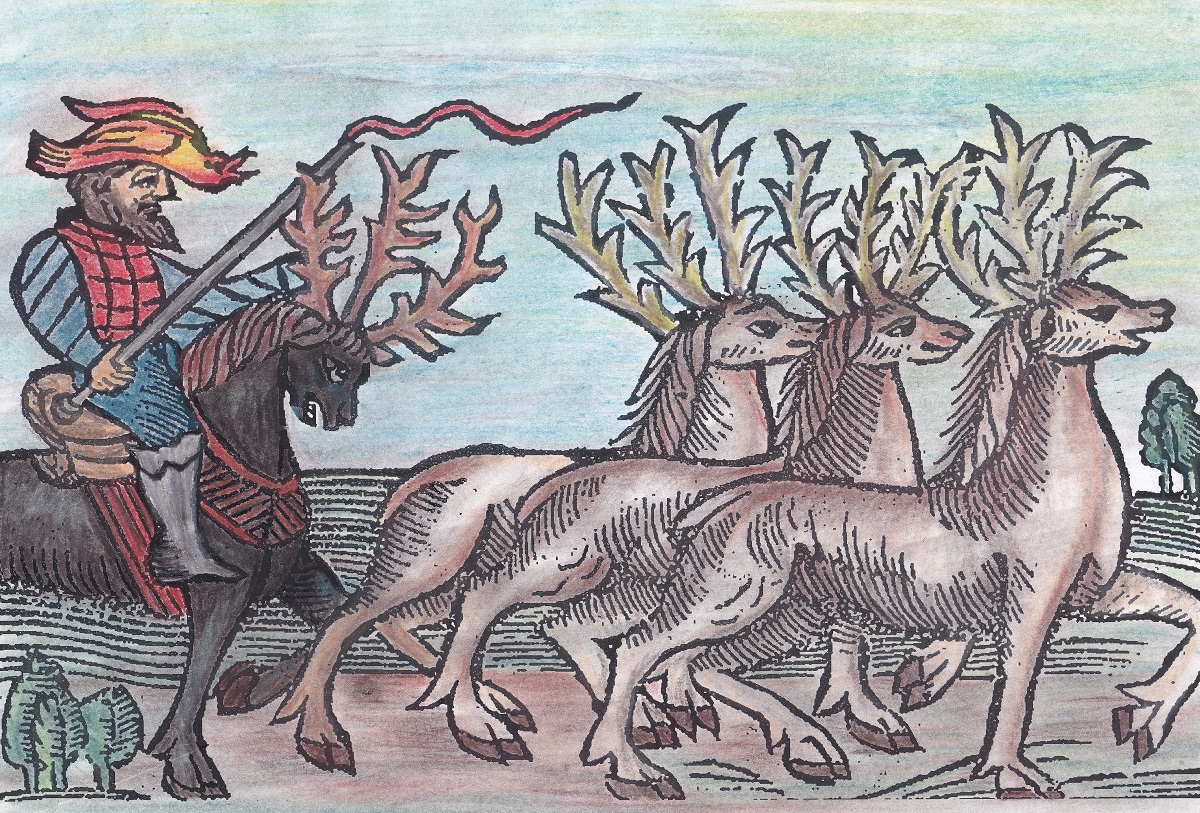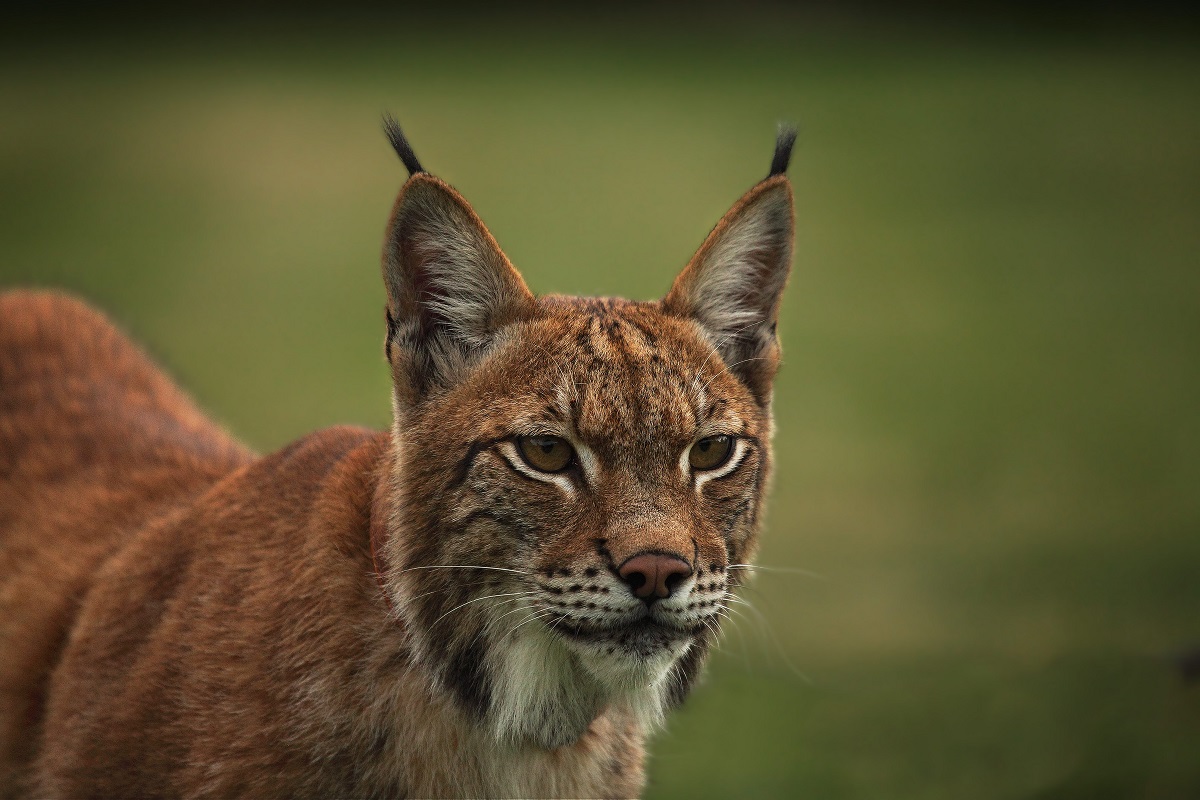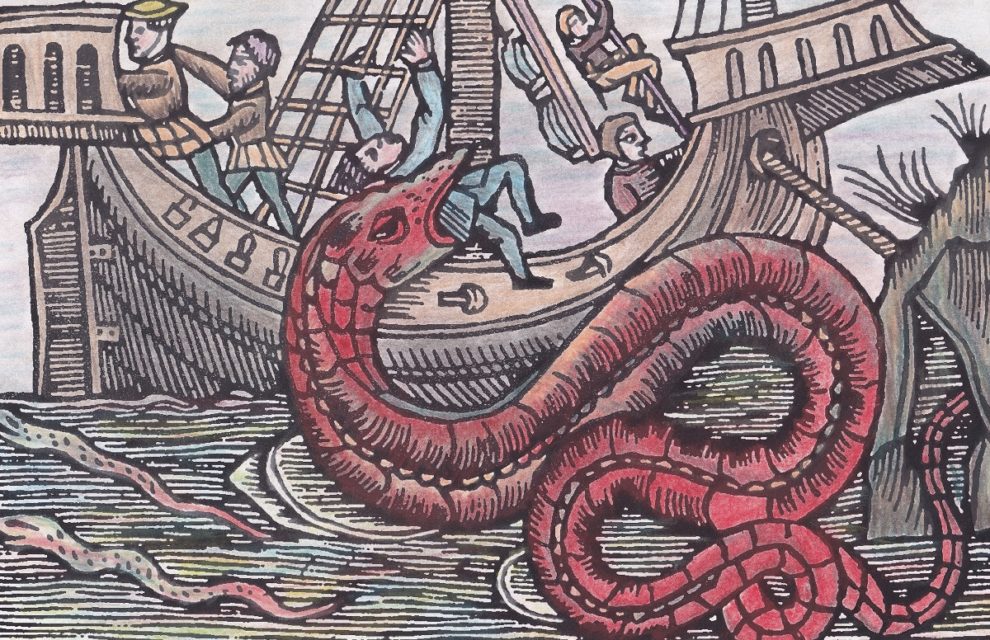While researching my feature film The Blinding Sea, a friend suggested I study Historia de Gentibus Septentrionalibus (A History of the Northern Peoples), an encyclopaedic work written in 1555 by the Swedish bishop Olaus Magnus. This work gathers together ancient Scandinavian folk remedies (which actually worked for some modern polar explorers such as Roald Amundsen) plus more purely fanciful pre-Christian folk tales about demons, witches, giants, and fiends.
Animals are important for Olaus Magnus, who writes about the magical powers both of actual living creatures and of purely mythical creatures, such as the sea-monster attacking a ship in the image above. He describes fanciful creatures of the imagination that symbolize and help soothe our deepest fears. I also enjoy the way he plays with myth and metaphor, both of which are deeply rooted in human nature.

On this subject, Northrop Frye writes:
“A myth to me is primarily a mythos, a story, narrative, or plot, with a specific social function. Every human society has a verbal culture, and in the pre-literary phase, when abstract thought has not developed, the bulk of this culture consists of stories. Usually there then arises a distinction between stories which explain to their hearer something that those hearers need to know about the religion, history, law, or social system of their society, and less serious stories told primarily for amusement. The more serious group are the myths: they grow out of a specific society and transmit a cultural heritage of shared allusion. We may call the myth … a circle drawn around a sacred or numinous area. The less serious group become folktales, which travel freely over the world through all barriers of language.” (Myth and Metaphor, p. 238)
Olaus Magnus reminds me of the 13th-century Icelandic bishop and poet Snorri Sturluson, who promoted the Gospels in Iceland, while regretting the gradual disappearance of pre-literary and pre-Christian folk traditions there and in Norway, which he documented for posterity in the Poetic Edda, the Prose Edda and Heimskringla. Then again, in the 17th century, the Scottish Episcopal minister Robert Kirk wrote The Secret Commonwealth, a book about fairies, witchcraft, ghosts and second sight, much of which was pre-literary and pre-Christian.
As I continue reading Jean Delumeau, I am struck by the French Catholic bishop Jean-Pierre Camus, who published a book of fiery sermons about human sinfulness in 1636. Camus claims: “Et puis Dieu a des yeux de Lynx pour pénétrer nos imperfections.” In other words: “And God is able to penetrate our imperfections because He has lynx eyes.”
Wow, that is an unexpected metaphor! It must be the first time I have heard of an all-seeing lynx-god … as if a lynx would have any interest in sin, self-denial and redemption! I wonder … is Camus suggesting lynxes have more insight than people do?
But then Camus had a vivid imagination. Quite apart from his duties as a bishop, he liked writing histoires tragiques or horrific tales about storms and kidnappings, on the model of ancient Greek romances and Renaissance stories.


